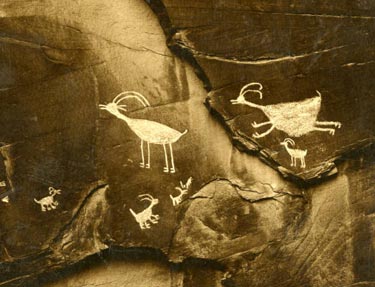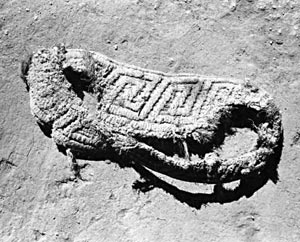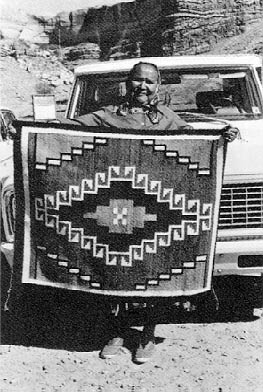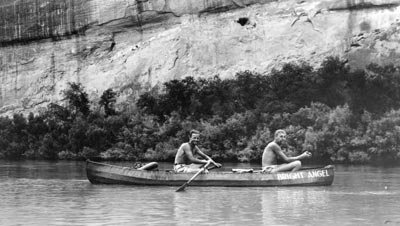San Juan County, in the heart of the Colorado Plateau, is a big country of mesas, gorges, canyons, cliffs, high desert plains, and astonishing rock formations.

The mighty Colorado and San Juan rivers as well as smaller streams have carved deep canyons and unusual erosional forms in the colorful sedimentary rock. Many people find the area spectacularly beautiful on a grand scale.
First Peoples
The Ancestral Pueblo people lived in this area for hundreds of years, until about 1300 BC. At first they built pithouse structures; later they built rock structures on the ground and high up in the cliffs. Their cliff houses, pictographs, and petroglyphs continue to baffle and fascinate visitors.

Archaeologists first identified and studied the earliest Ancestral Pueblo culture in Grand Gulch, a side canyon to the San Juan River that has hundreds of prehistoric sites. They called these early people Basketmakers (now they’re called the Pueblo 1 culture).
The Navajo Indians, who migrated later to the area, now have part of their reservation in San Juan County, from the San Juan River to the Arizona border.
Immigration to the Area
A few white residents lived along the San Juan River before 1879. In that year, Mormon scouts who were exploring a route for the famous Hole-in-the-Rock Expedition began the full-scale Euro American settlement of San Juan County. It took six months along what may have been the roughest emigrant trail in the West for 180 Mormon men, women, and children to reach the present site of Bluff on April 6, 1880.

But farming along the San Juan River was a chancy proposition, for the treacherous river either flooded or went dry too often for dependable irrigation. Early cattlemen, like the brothers Al and Jim Scorup, did better in the rough canyon country than the farmers did. Their cows could scour the canyons for the sparse vegetation.
After a decade of fighting the elements many of the Bluff settlers discovered that life was somewhat easier in higher country around the Abajo Mountains, and the towns of Blanding and Monticello replaced Bluff as San Juan’s main focal points.
Hispanic migrants first came to Utah as sheep herders in Monticello. The town developed a thriving Hispanic population.
Navajos, too, raised sheep, developing huge herds and selling the rugs they made from the wool to trading posts.
During the Great Depression, the U.S. government forced them to kill many of their sheep in order to reduce the herd sizes and raise prices on sheep. This was a huge blow economically and emotionally to the Navajo people.

Economy
Mining has been an inconsistent but exciting part of the economy of the county. A gold rush on the San Juan River in the early 1890s didn’t last long, but miners in Glen Canyon of the Colorado had better luck eking out a living from deposits along the river bars.
Oil and gas exploration around the turn of the century located some productive wells. You can still see some working oil wells along the San Juan River.
The uranium boom of the early 1950s brought large numbers of people into the area and created a few large fortunes.

Right now, most residents see tourism as their most promising economic resource, particularly since the creation of Lake Powell in the early 1960s. As the sixth largest natural bridge in the world, Rainbow Bridge is a common attraction, accessible as it is from Lake Powell, but it is also a sacred site of the Navajo. Marinas at Hite, Hall’s Crossing, and Piute Farms also draw large numbers of visitors, and lots of groups take river trips through Cataract Canyon and on the San Juan.
Did You Know?
| Most of the known archaeological sites in the county have been damaged by vandals and looters. |
| Rock formations here include Paul Bunyan’s Potty, Bears Ears, Mexican Hat, Angel Arch, and Zeke’s Bathtub. |
| The first white settlers of Bluff arrived after building a road for six months—down a 1200-foot-high cliff, across the Colorado River, and over the roughest terrain—using what Jens Nielson called “stickie-ta-tudy.” |
| Episcopal priest H. Baxter Liebler established St. Christopher’s Mission to teach and learn from the Navajos. |
| Ancestral Puebloan petroglyphs are located near the natural Bridges National Monument |
Fast Facts
Area: 7,725 Square Miles
County Seat: Monticello
Where it Got its Name: The San Juan River. The river was perhaps named by Don uan Maria de Reviera in 1765
Selected Cities/Towns: Blanding, Monticello, Bluff, Mexican Hat
Economy: Livestock, Agriculture, Mining, Tourism
Keep Exploring!
Return to the County’s home page here.
Return to the I Love Utah History home page here.